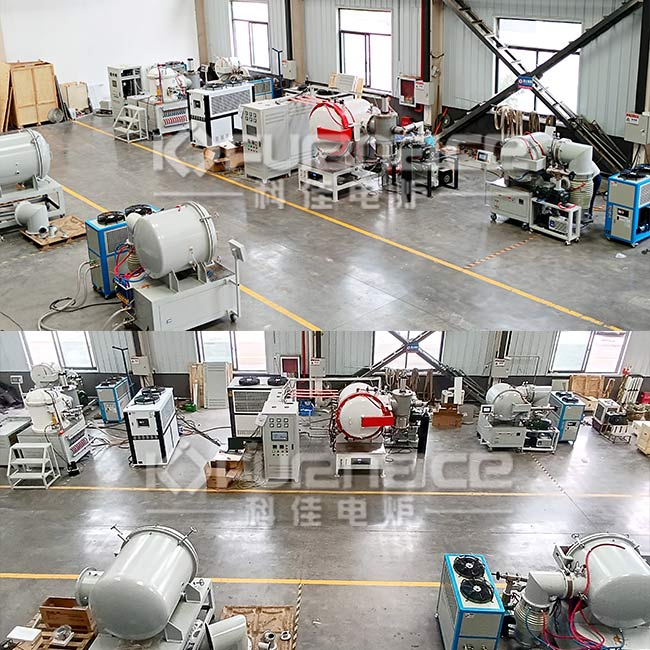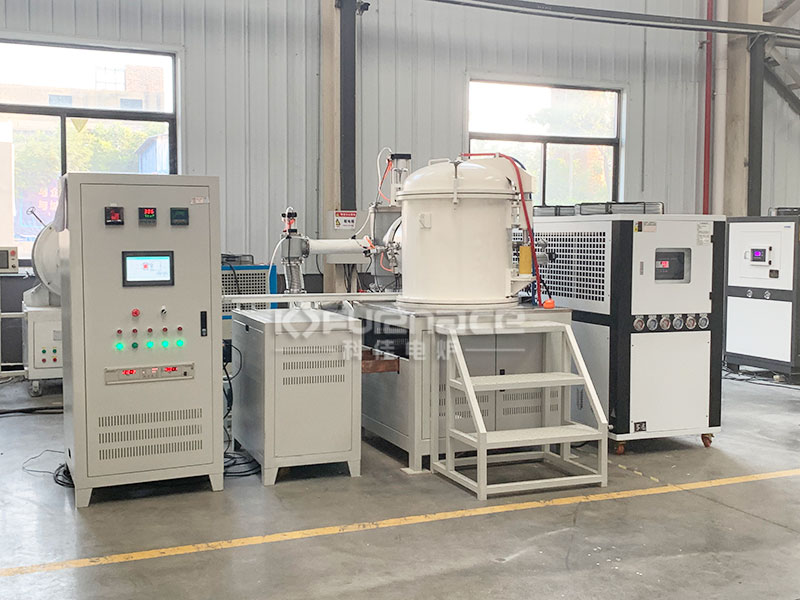When choosing a vacuum heat treatment furnace, multiple key factors need to be considered to ensure that the selected equipment can meet specific process and production requirements. Let’s take a look at what to pay attention to when choosing a vacuum heat treatment furnace!

Some commonly used vacuum heat treatment furnaces (click on the image to view product details)
1. Heating temperature
The heating temperature range of a vacuum heat treatment furnace is usually between 600 ℃ and 2000 ℃, depending on the furnace type and heating element. When selecting, the appropriate heating temperature range should be determined based on the type, size, and required heat treatment process of the material to be processed. For materials that require high-temperature sintering, a vacuum furnace that can achieve higher heating temperatures should be selected.
2. Vacuum degree
Vacuum degree is one of the important performance indicators of vacuum heat treatment furnaces, which determines the gas content inside the furnace and the processing quality of materials. Vacuum furnaces are usually divided into three types of vacuum systems: low, medium, and high. Users can choose the appropriate vacuum system according to their process requirements. Common vacuum components include rotary vane pumps, Roots pumps, molecular pumps, and diffusion pumps. If the material to be processed has special requirements for humidity, it is also necessary to consider using vacuum components such as slide valves and dry pumps.
3. Cooling method
The cooling methods of vacuum heat treatment furnaces mainly include water cooling and air cooling. Water cooling is usually used for rapid cooling, while air cooling is suitable for situations where cooling speed is not required. When selecting, the appropriate cooling method should be determined based on the material’s heat treatment process and cooling rate requirements.
4. Heating element
Heating element is one of the core components of vacuum heat treatment furnace, which determines the heating efficiency and temperature uniformity inside the furnace. Common heating elements include resistance wires, silicon carbide rods, and silicon molybdenum rods. When selecting, the appropriate heating element should be determined based on factors such as heating temperature, material type, and heating efficiency.
5. Control system
The control system is an important component of the vacuum heat treatment furnace, responsible for monitoring the temperature, vacuum degree, and other key parameters inside the furnace, and controlling the operation of heating elements and cooling systems. A high-quality control system should have the characteristics of high reliability, complete functions, easy operation and maintenance. When choosing, attention should be paid to the stability and safety of the control system, as well as whether it has functions such as monitoring, fault display, and recording.
6. Furnace structure and dimensions
The structure and size of the furnace body are also factors that need to be considered when choosing a vacuum heat treatment furnace. The furnace structure should be designed reasonably to facilitate operation and maintenance. At the same time, the size of the furnace body should be able to meet the size and quantity requirements of the materials to be processed. When selecting, it is necessary to determine the appropriate furnace structure and size based on production needs.
7. Manufacturers and Services
Finally, when choosing a vacuum heat treatment furnace, it is also necessary to consider the manufacturer’s reputation and after-sales service. High quality manufacturers usually have good production technology and rich experience, and can provide high-quality equipment and comprehensive services. When making a selection, it is possible to understand the manufacturer’s qualifications, performance, and customer evaluations to ensure the quality and after-sales service of the selected equipment are guaranteed.

Vertical graphite vacuum furnace with a temperature of up to 2000 ℃ (click on the image to view product details)
So, when choosing a vacuum heat treatment furnace, multiple factors need to be considered, including heating temperature, vacuum degree, cooling method, heating elements, control system, furnace structure and size, as well as manufacturer and service. By considering these factors comprehensively, it can be ensured that the selected equipment can meet specific process and production requirements.Click to learn more vacuum Furnaces! Or click on online customer service to learn more about product information!